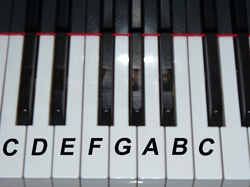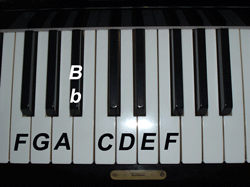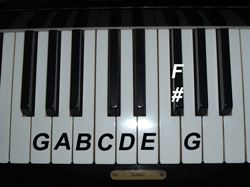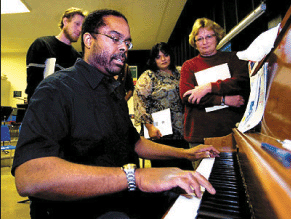By Charley Wyser
One of the most powerful concepts to learn in music is that of the major scale.
Let’s take our last two lessons and combine them to learn the major scale. To refresh, the first lesson was on half steps (sharps and flats), and lesson 2 focused on whole steps.
What is a major scale, and why is it important? When you hear people talk about playing a tune in a certain key, they are referring to the major scale. If you go back to your elementary school days, you probably learned how to sing "do-re-mi-fa-so-la-ti-do".
When you sing this, you are actually singing a major scale. When you sing any song in a certain key, you are picking a note to start on and singing "do-re-mi-fa-so-la-ti-do".
This will become clearer as we go deeper into this lesson.
To see how this works, start on the note C. If you sing "do-re-mi-fa-so-la-ti-do", you will discover that your notes are C (do), D (re), E (mi), F (fa), G (so), A (la), B (ti) and C (do).
Notice how all of your notes are white keys. This means that we are playing in the key of C. So, when a song is written in the key of C, it has no sharps or flats in the key. Take a look at the picture below.

- C to D = whole step
- D to E = whole step
- E to F = half step
- F to G = whole step
- G to A = whole step
- A to B = whole step
- B to C = half step
Starting note + w + w +h + w + w + w + h
Using this formula, we can start on any note and instantly play a major scale. For example if we want to play an F major scale, our notes would be: F (starting note), G, A, Bb, C, D, E, and F.
- F to G = whole step
- G to A = whole step
- A to Bb = half step
- Bb to C = whole step
- C to D = whole step
- D to E = whole step
- E to F = half step

Let’s practice on one more scale – the G major scale. Our notes in the G major scale are G, A, B, C, D, E, F#, and G.
- G to A = whole step
- A to B = whole step
- B to C = half step
- C to D = whole step
- D to E = whole step
- E to F# = whole step
- F# to G = half step

In order to really get in and understand how music works (theory) we must really become familiar with the major scale. This is a process that is done over time, not in one evening as many would lead you to believe. But, as usual, this learning process should be fun!
In the next lesson, we are going to learn how the major scale can be used to play simple kid’s melodies. As you start to understand this concept, you will also see how the major scale can be used to play even the most advanced melodies.
If you would like to check out all of my podcasts (audio lessons online), click on one of the links below:
- To access with iTunes
- To access with Odeo (odeo/a899ff8db4f63f39)
- to access with Podcast Alley
- direct access to the RSS Feed http://easypiano.com/eppodcast/pianolessons.rss
Charley Wyser
easypiano.com






No comments:
Post a Comment